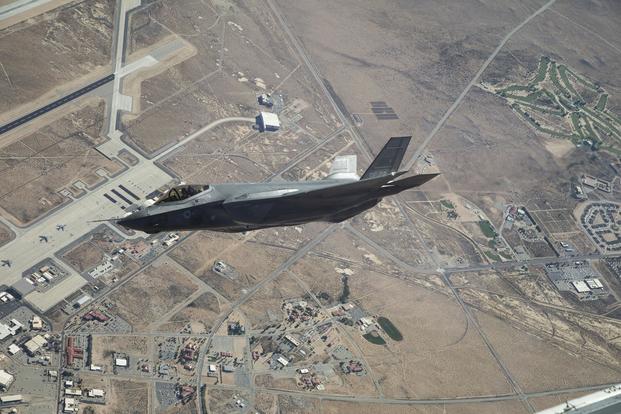The director of the F-35 Joint Strike Fighter program gave aircraft maker Lockheed Martin Corp. a public slap on the wrist Wednesday, saying the defense company is moving too slow in production, lacks transparency on costs and isn't streamlining production effectively.
"I am not satisfied in the following areas: the price is coming down, but it's not coming down fast enough; we don't know, to the level of granularity that I want to know, what it actually costs to produce an aircraft, and the number of quality escapes and what we call production line defects needs to get better," Vice Adm. Mat Winter told reporters at the F-35 Joint Program Office headquarters near Washington, D.C.
The JPO and Lockheed have been trying to reach a contract deal for months for the next batch of 130 F-35 Joint Strike Fighters, known as low rate initial production [LRIP] 11.
Officials had hoped the Pentagon could announce the contract award in October.
Related content:
- Next Big F-35 Contract Expected Later This Year
- A-10 Vs. F-35 Showdown Still Coming -- And Could Happen This Spring
- F-35 Could Carry B61 Nuclear Warhead Sooner Than Planned
Lockheed's CEO Marillyn A. Hewson even said last March she was "optimistic" the deal would go through by the end of 2017.
"They could be much more cooperative, collaborative, and we could seal this deal faster. They choose not to, and that's a negotiating tactic," said Winter, who's been in the position 9 months.
Winter replaced Lt. Gen. Chris Bogdan, who retired in July.
Winter said the price per unit cost for the F-35A, for example -- which includes the airframe, engine and Lockheed's fee -- was $94.3 million per jet in the LRIP 10 buy. The price per unit cost has dropped a over 7 percent, ahead of JPO's goal of a 6 to 7 percent reduction.
LRIP 11, and succeeding contracts 12 and 13 should be on track to drop even lower, Winter said, though he declined to give specific figures or estimates.
"If I give you a number and it gets printed, Lockheed Martin has a target. I'm negotiating for the best deal," he said.
Winter said the Defense Department isn't looking to impose another unilateral contract scenario anytime soon. Lockheed was given a "take-it-or-leave-it" contract in 2016 for LRIP 9, a $6.1 billion deal.
Meanwhile, Air Force officials have said they want to ramp up the buy rate of the F-35A, the most popular export version of the jet. But the service intends to buy only 48 F-35As, according to its fiscal 2019 budget request. That's a steady increase from last year, but still shy of its original 60- aircraft-per-year goal.
Whether or not Lockheed's negotiating choices have affected the buy rate is unclear.
Air Force Secretary Heather Wilson on Thursday said the service debated whether 2019 was the right year to ramp up the F-35 buy rate given that Block 4 -- the latest software modernization to upgrade the F-35's avionics and weapons delivery -- is just on the horizon.
Block 4 is slated for implementation sometime before the end of 2018.
When asked whether or not the missed target of 60 aircraft purchased per year would change business going forward, a Lockheed official said aircraft production was still on track to meet price reduction goals.
"Acquisition rate analysis based on operational needs and budget realities is a DoD-led effort and is common across all aircraft platforms as technology matures to meet evolving threats," Lockheed spokesman Mike Friedman said in a statement.
"As production ramps and we implement additional cost savings initiatives, we're targeting reduction to $80 million per F-35A by 2020," he added.
"In addition to the unit cost, we're focused on sustainment to deliver more readiness at less cost," Friedman said last week. "On the modernization front, we are working closely with our customers to deliver timely, affordable and incremental technology improvements to maintain joint air dominance against evolving threats for decades to come."
-- Oriana Pawlyk can be reached at oriana.pawlyk@military.com. Follow her on Twitter at @oriana0214.










